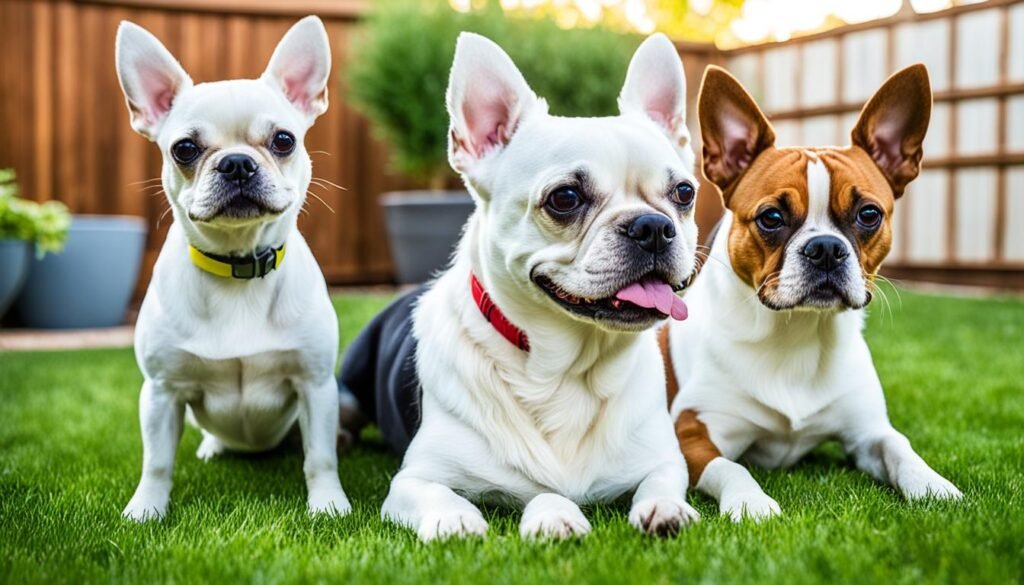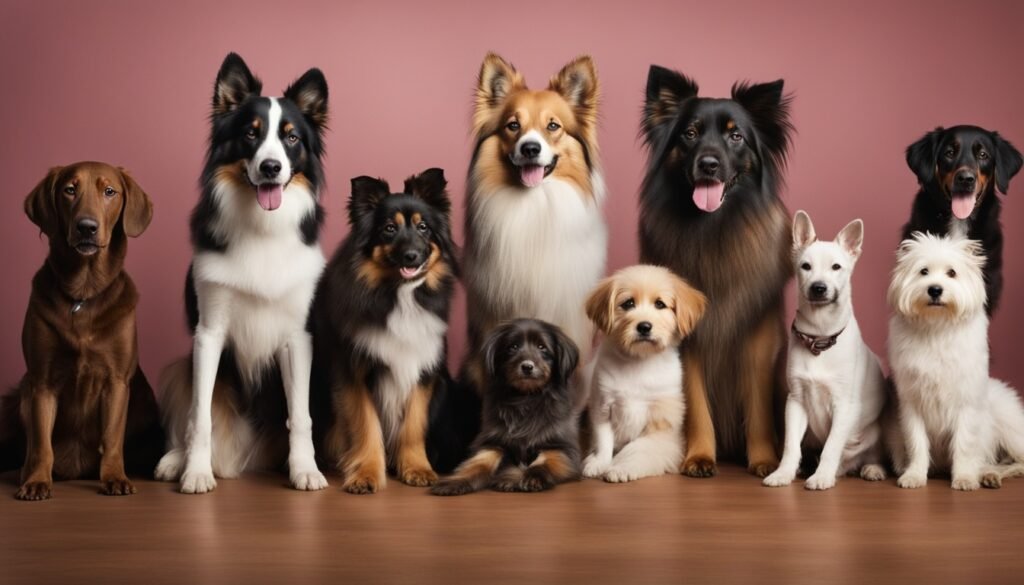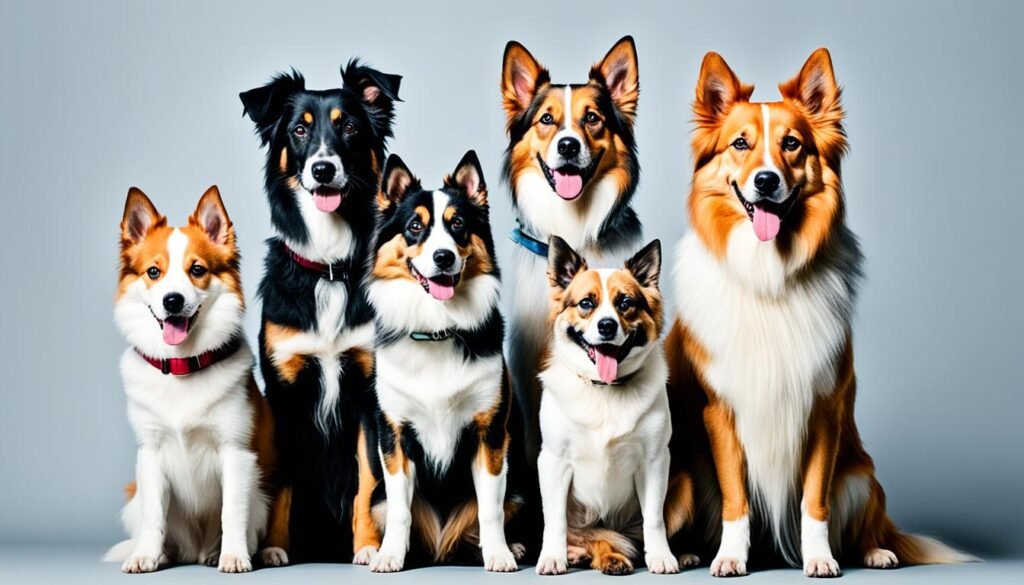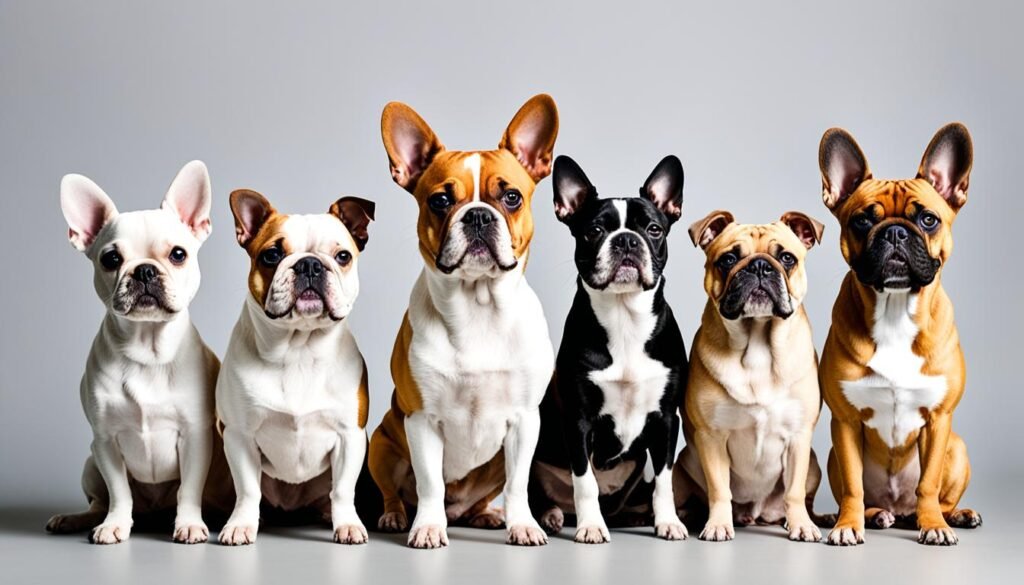As a modern pet owner with a hectic schedule, I’ve often wondered if owning a dog was even feasible. The idea of daily walks, constant grooming, and managing a high-energy pup seemed overwhelming. That is, until I discovered the world of low-maintenance dog breeds. These canine companions have become a revelation, allowing me to enjoy the unconditional love of a furry friend without sacrificing my work-life balance1.
In this article, we’ll explore the appeal of low-maintenance dog breeds and why they are the perfect choice for busy individuals like myself. We’ll dive into the key factors that contribute to these breeds’ easy-care nature, and I’ll share insights on how to select the ideal low-maintenance companion to suit your lifestyle2.
Key Takeaways
- Low-maintenance dog breeds require minimal grooming, moderate exercise, and can adapt to periods of solitude.
- These breeds are ideal for busy pet owners who want the companionship of a dog without the overwhelming commitment.
- Factors like temperament, size, and potential health concerns should be considered when choosing a low-maintenance breed.
- Chihuahuas, Dachshunds, and Pugs are examples of low-maintenance breeds that can thrive in modern, fast-paced lifestyles.
- Greyhounds, Labradors, and Mastiffs are also recognized as low-maintenance options for busy owners.
The Appeal of Low-Maintenance Dog Breeds
In today’s fast-paced world, finding the perfect canine companion can be a challenge, especially for busy individuals. However, low-maintenance dog breeds offer an appealing solution, providing companionship without the overwhelming demands of high-maintenance breeds3. These breeds require less grooming, are content with moderate exercise, and adapt well to periods of solitude, making them ideal for those with limited time but a deep affection for pets.
Why Busy Individuals Should Consider These Breeds
The key factors that contribute to a dog breed’s low-maintenance status include minimal grooming needs, moderate exercise requirements, and the ability to adapt to periods of solitude without experiencing undue stress3. These attributes allow busy owners to enjoy the companionship of a canine friend without the overwhelming demands of high-maintenance breeds, ultimately reducing stress, saving time, and still offering the joys of pet ownership3.
Factors Contributing to Low Maintenance
Low-maintenance dog breeds, such as Maltese, Dachshund, Pembroke Welsh Corgi, Poodle, and Pomeranian, are often sought after for their adaptability to various living situations, including apartment life and busy family dynamics3. These breeds are known for their minimal grooming needs, moderate exercise requirements, and the ability to handle periods of solitude without experiencing undue stress, making them ideal companions for busy individuals3.
| Breed | Size Range | Lifespan |
|---|---|---|
| Basset Hound | 44-75 pounds | 10-12 years |
| Shih Tzu | 9-16 pounds | 10-16 years |
| Cavalier King Charles Spaniel | 13-18 pounds | 9-14 years |
| Chihuahua | 4-6 pounds | 12-20 years |
| Dachshund | 16-32 pounds | 12-16 years |
| French Bulldog | 20-28 pounds | 10-12 years |
| Italian Greyhound | 8-11 pounds | 12-15 years |
| West Highland White Terrier | 13-20 pounds | 12-16 years |
| Maltese | 2-8 pounds | 12-15 years |
| Papillon | 8-10 pounds | 13-15 years |
| Pomeranian | 4-8 pounds | 12-16 years |
| Miniature Poodle | 10-15 pounds | 13-15 years |
| Pug | 14-18 pounds | 12-15 years |
| Boston Terrier | 10-25 pounds | 13-15 years |
| Labrador Retriever | 55-79 pounds | 10-12 years |

The breeds mentioned in the table, including Chihuahuas, Dachshunds, Greyhounds, French Bulldogs, Cavalier King Charles Spaniels, Shih Tzus, Basenjis, Pugs, Boston Terriers, Italian Greyhounds, Basset Hounds, Bullmastiffs, Whippets, English Bulldogs, and Mastiffs, are all considered low-maintenance due to their minimal grooming needs, moderate exercise requirements, and ability to adapt to various living situations4. These attributes make them excellent choices for busy individuals seeking companionship without the overwhelming demands of high-maintenance breeds3.
Low-Maintenance Dog Breeds
When it comes to easy-care canine companions, there is a wide array of low-maintenance dog breeds to consider. These apartment-friendly, low-shedding dogs are perfect for busy individuals seeking a loyal and lovable pet without the hassle of extensive grooming or exercise demands5.
Greyhounds, for instance, are known for their need of just a couple of 30-minute walks each day, making them one of the lowest maintenance dogs5. Dachshunds, with their little legs, only require a few short walks and playtime to stay happy and healthy5. Shiba Inus, on the other hand, need regular brushing, especially during shedding season, and have an average energy level, requiring a couple of good walks per day5.
Other low-maintenance breeds include Basset Hounds, with their average exercise needs and a few good walks and playtime;5 French Bulldogs, with minimal grooming requirements and low exercise needs, though they bond closely with their family and require proper training;5 and Bullmastiffs, with their low energy levels, content with just a couple of walks and happy to lounge around the house5.
Chihuahuas, especially the short-coated variety, demand minimal grooming and are satisfied with a few good walks each day5. Whippets, on the other hand, enjoy short, intense bursts of exercise and relaxation at home, with easy grooming needs due to their short coats5.
| Breed | Grooming Requirements | Exercise Needs | Lifespan |
|---|---|---|---|
| Basset Hound | Average | Average | 10-12 years6 |
| Boston Terrier | Minimal | Moderate | 13-15 years6 |
| Chihuahua | Minimal | Moderate | 12-20 years6 |
| Dachshund | Regular | Moderate | 12-16 years6 |
| French Bulldog | Minimal | Low | 10-12 years6 |
| Greyhound | Minimal | Moderate | N/A |
| Maltese | Regular | Moderate | 12-15 years6 |
| Pug | Minimal | Moderate | 12-15 years6 |
| Whippet | Minimal | Moderate | N/A |

When considering a low-maintenance dog breed, it’s important to research their specific grooming needs, exercise requirements, and potential health concerns to ensure a good match with your lifestyle7. Additionally, mixed breed dogs can also be an excellent option for those seeking a low-maintenance pet7.
Considerations When Choosing a Low-Maintenance Breed
Choosing the right low-maintenance dog breed goes beyond just assessing grooming needs. It’s crucial to carefully consider the breed’s temperament, size, and compatibility with your lifestyle. Proper evaluation of these factors will help ensure a harmonious and rewarding relationship with your canine companion8.
Lifestyle Factors
When selecting a low-maintenance dog, it’s important to evaluate your daily routine and available time and resources. Some breeds may require more social interaction or have higher exercise needs, while others are more independent and content with less activity. Carefully assessing your lifestyle and matching it to the breed’s characteristics can lead to a better fit8.
Temperament and Size
The breed’s temperament and size are also crucial considerations. Some low-maintenance breeds, such as the Beagle, Boxer, and Doberman Pinscher, are known for their affectionate and social nature, while others, like the Great Dane, Weimaraner, and Italian Greyhound, may be more independent. Ensuring the breed’s size aligns with your living space and activity level is also vital8.
Potential Health Concerns
In addition to lifestyle and temperament factors, it’s essential to research the potential health concerns associated with different low-maintenance dog breeds. Some breeds may be predisposed to certain conditions that require specialized care or more frequent veterinary visits. Understanding these potential health issues can help you prepare for the long-term care of your canine companion8.
By carefully considering these crucial factors, you can find a low-maintenance dog breed that truly complements your lifestyle and provides a rewarding, long-term companionship8.

Conclusion
As we’ve explored the world of low-maintenance dog breeds, it’s clear that these canine companions can be an excellent choice for busy individuals seeking the joys of pet ownership without the overwhelming demands9. With a significant portion of the top 15 low-maintenance breeds requiring only minimal grooming, and weight ranges spanning from the compact Chihuahua to the sleek Greyhound, there is a suitable option for a wide range of lifestyles and living situations.
While the quest for a low-maintenance dog breed suggests a practical approach to pet ownership, it’s crucial to remember that every dog deserves love, attention, and care10. Breeds like French Bulldogs, Chihuahuas, and Pugs are known for their minimal grooming needs and relatively low energy levels, making them great companions for busy owners. Carefully considering your lifestyle, resources, and the needs of the breed you choose will ensure a harmonious relationship with your new furry friend.
By selecting a low-maintenance breed that aligns with your busy schedule, you can enjoy the joys of pet ownership without feeling overwhelmed, ultimately leading to a rewarding and fulfilling experience for both you and your canine companion. The importance of responsible pet ownership cannot be overstated, as it ensures the well-being of your furry friend and the longevity of your cherished bond.




